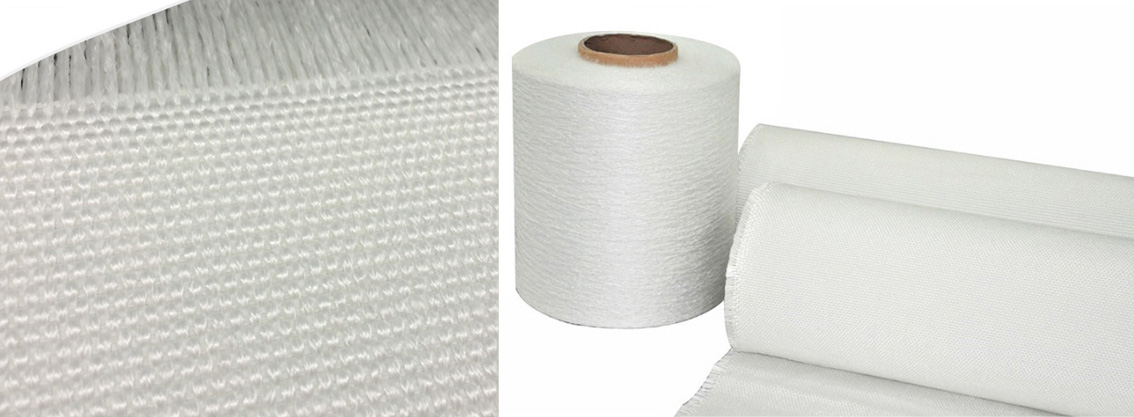This is an excellent question that touches on the core of how material structure design impacts performance.
Simply put, expanded glass fiber cloth does not use glass fibers with higher heat resistance. Instead, its unique “expanded” structure significantly enhances its overall thermal insulation properties as a “cloth.” This allows it to protect downstream objects in higher-temperature environments while safeguarding its own fibers from easy damage.
You can understand it this way: Both share the same glass fiber “material” with identical temperature resistance, but the “structure” allows the expanded fabric to perform far better in high-temperature applications.
Below, we explain in detail why its “temperature resistance performance” is superior through several key points:
1. Core Reason: Revolutionary Structure – “Fluffy Air Layers”
This is the most fundamental and crucial factor.
- Standard fiberglass cloth is tightly woven from warp and weft yarns, creating a dense structure with minimal internal air content. Heat can relatively easily transfer rapidly through the fibers themselves (solid thermal conduction) and the gaps between fibers (thermal convection).
- Expanded fiberglass cloth undergoes a special “expansion” treatment after weaving. Its warp yarns are standard, while the weft yarns are expanded yarns (an ultra-loose yarn). This creates countless tiny, continuous air pockets within the fabric.
Air is an excellent insulator. These stationary air pockets effectively:
- Impede thermal conduction: Significantly reducing contact and heat transfer pathways between solid materials.
- Suppress thermal convection: The micro-air chambers block air movement, cutting off convective heat transfer.
2. Enhanced Thermal Protection Performance (TPP) — Protecting Downstream Objects
Thanks to this highly efficient air insulation layer, when high-temperature heat sources (such as flames or molten metal) strike one side of the expanded fabric, heat cannot rapidly penetrate to the other side.
- This means fire-resistant garments made from it can prevent heat transfer to a firefighter’s skin for longer periods.
- Welding blankets made from it more effectively prevent sparks and molten slag from igniting flammable materials below.
Its “temperature resistance” is more accurately reflected in its “thermal insulation” capability. Testing its temperature resistance focuses not on when it melts, but on how high an external temperature it can withstand while maintaining a safe temperature on its reverse side.
3. Enhanced Thermal Shock Resistance — Protecting Its Own Fibers
- When ordinary dense fabrics encounter high-temperature shocks, heat rapidly conducts through the entire fiber, causing uniform heating and swift reaching of the softening point.
- The structure of expanded fabric prevents instantaneous heat transfer to all fibers. While surface fibers may reach high temperatures, deeper fibers remain significantly cooler. This uneven heating delays the material’s overall critical temperature, enhancing its resistance to thermal shock. It’s akin to swiftly waving a hand over a candle flame without burning, yet grasping the wick causes immediate injury.
4. Increased Heat Reflection Area
The uneven, fluffy surface of expanded fabric offers greater surface area than smooth conventional fabric. For heat primarily transmitted via radiation (e.g., furnace radiation), this larger surface area means more heat is reflected back rather than absorbed, further enhancing insulation efficiency.
Analogy for Understanding:
Imagine two types of walls:
1. Solid brick wall (analogous to standard fiberglass cloth): Dense and sturdy, but with average insulation.
2. Cavity wall or wall filled with foam insulation (analogous to expanded fiberglass cloth): The wall material’s inherent heat resistance remains unchanged, but the cavity or foam (air) significantly enhances the entire wall’s insulation performance.
Summary:
|
Characteristic |
Ordinary Fiberglass Cloth | Expanded Fiberglass Cloth | Advantages Provided |
| Structure | Dense, smooth | Loose, containing large amounts of stationary air | Core advantage |
| Thermal Conductivity | Relatively high | Extremely low | Exceptional thermal insulation |
| Thermal Shock Resistance | Poor | Excellent | Resistant to damage when exposed to open flames or high-temperature molten slag |
| Primary Applications | Sealing, reinforcement, filtration | Thermal insulation, heat retention, fireproofing Fundamentally |
Different Uses |
Therefore, the conclusion is: The “high temperature resistance” of expanded fiberglass cloth primarily stems from its exceptional thermal insulation properties due to its fluffy structure, rather than any chemical changes in the fibers themselves. It achieves application in higher-temperature environments by “isolating” heat, thereby protecting both itself and the protected objects.
Post time: Sep-18-2025







